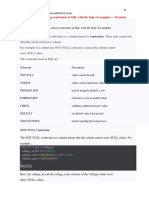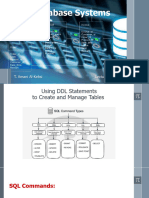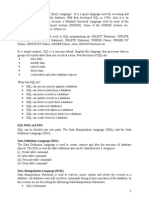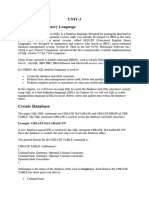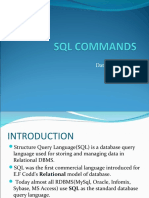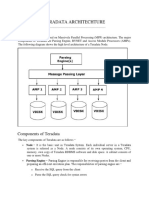0% found this document useful (0 votes)
24 views58 pagesUnit - 4 DBMS
This document provides an overview of SQL Data Definition Language (DDL), detailing commands such as CREATE, ALTER, and DROP for defining database schemas, tables, and constraints. It explains various data types, including numeric, character, date/time, and boolean, as well as how to apply constraints like NOT NULL, UNIQUE, and FOREIGN KEY to ensure data integrity. Additionally, it covers advanced querying techniques, nested queries, and the use of assertions and triggers in SQL for maintaining database rules and conditions.
Uploaded by
saniyakhurshidbanuCopyright
© © All Rights Reserved
We take content rights seriously. If you suspect this is your content, claim it here.
Available Formats
Download as PDF, TXT or read online on Scribd
0% found this document useful (0 votes)
24 views58 pagesUnit - 4 DBMS
This document provides an overview of SQL Data Definition Language (DDL), detailing commands such as CREATE, ALTER, and DROP for defining database schemas, tables, and constraints. It explains various data types, including numeric, character, date/time, and boolean, as well as how to apply constraints like NOT NULL, UNIQUE, and FOREIGN KEY to ensure data integrity. Additionally, it covers advanced querying techniques, nested queries, and the use of assertions and triggers in SQL for maintaining database rules and conditions.
Uploaded by
saniyakhurshidbanuCopyright
© © All Rights Reserved
We take content rights seriously. If you suspect this is your content, claim it here.
Available Formats
Download as PDF, TXT or read online on Scribd
/ 58




